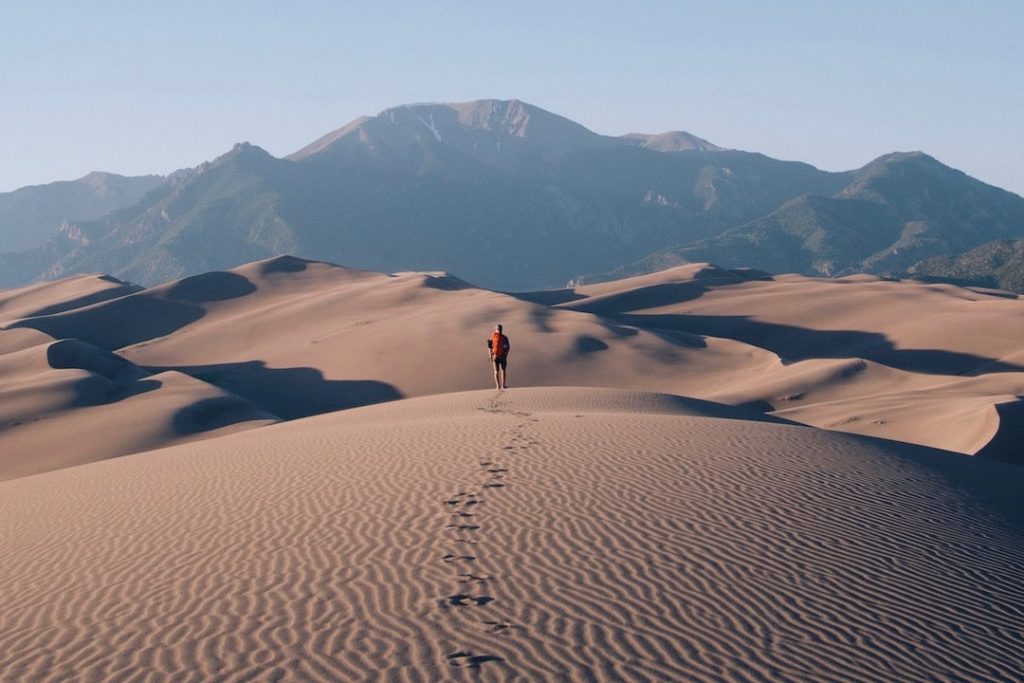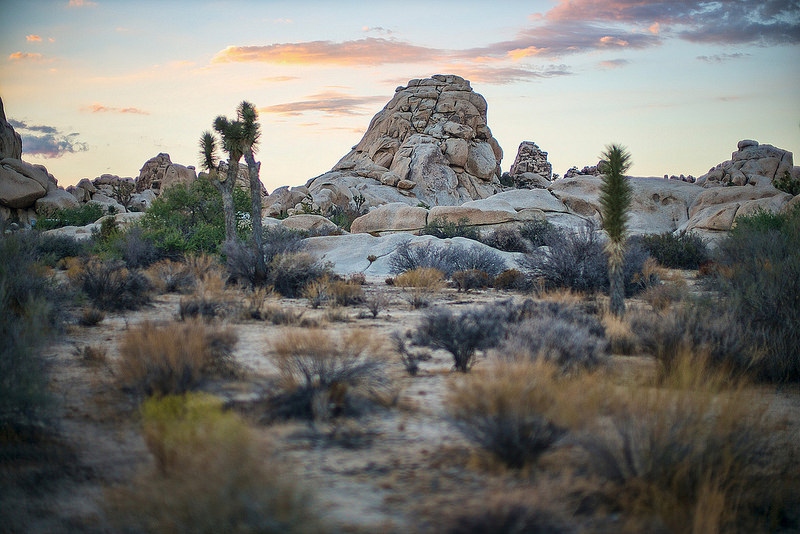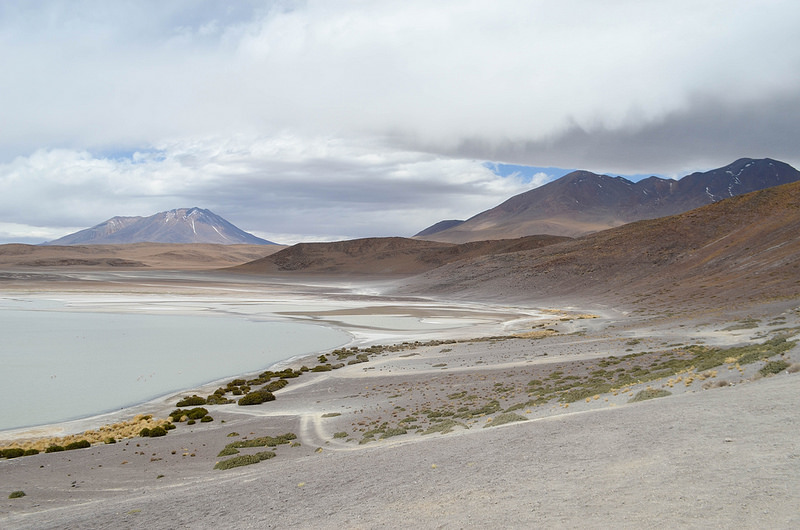Desert hiking – yes, it’s a thing. And while it’s not for the faint of heart or an inexperienced hiker, desert hiking is one of the most beautiful, challenging expeditions a hiker can embark on. The landscapes are dramatic, almost lunar, transporting hikers into what seems like a different world. The silence is peaceful, uniting you with the sand under your feet and the sun above your head. And the wildlife is undoubtedly unique: from flowering cacti to charming animals, there’s something new around every corner.
But behind the beauty and adventure of desert hiking is dozens of hidden risks. The bottom line is, if you’re not prepared, desert hiking can be extremely dangerous.
Before you take to the sand, review these essential desert hiking tips, and make sure your day pack includes these unique extra pieces of equipment.
Desert Hiking Essentials: Packing List
For the most part, hiking packing lists don’t change very much from trail to trail. But desert hiking is a bit of an exception because the landscape you’re tackling is entirely different. Deserts are hot, sunny, and unforgiving, meaning the list you referenced for your hike through forested trails won’t be relevant here. Of course, pack all of the usuals, like running shoes, snacks, and a compass, but there are some other things you need to consider!

Sodium Replacement Powder
Also known as electrolyte replacements, these powders help your body replenish electrolytes and prevent hyponatremia. When you’re out in the heat, exerting your body for long periods of time, these supplements are not only helpful but a safety measure as well.
Extra Water
This is a no-brainer; you need plenty of water when you take to the desert. Two to six quarts are recommended for each hiker each day, and an additional backup supply of about a gallon in your vehicle is also a good safety measure. If you get lost, the odds of a spring or river popping up are virtually non-existent, so don’t risk it.
A Brimmed Hat
Because you’ll be out in the sun all day, you’re going to want a hat that provides all-around protection. A baseball cap or visor won’t do. Consider a brimmed hat – the wider, the better for shielding your eyes from the sun and protecting your neck from sunburn.
Sunscreen
On the topic of sunburns, a very high SPF sunscreen is a must, starting at least SPF 30 and working your way up, depending on your skin type. I pack sunscreen on every hike I go on, but this item is forgotten by a lot of hikers, so bring a big bottle and share with those who haven’t packed it.
Good Sunglasses
Just like the brimmed hat and sunscreen suggests, the sun can be a bit of an issue on desert hikes. A pair of really great sunglasses can make a huge difference when it comes to desert hikes, so make the investment and protect your eyes.
Cotton Long Sleeve Shirt
Any experienced outdoors person knows cotton is the worst material for hiking. It’s a terrible insulator and doesn’t dry very quickly if you get wet. But in the desert, that cooling ability is an asset. Plus if you opt for a long sleeve, it will protect your upper body from the sun as well.
Hats, Mittens, and a Down Jacket
Yes, the desert is hot, so these items might feel strange to pack. But if you find yourself stranded in the desert at night, you put yourself at serious risk of hypothermia if you don’t have warm clothes. The desert may be unbelievably hot in the day, but some locations drop to below freezing at night. Pack them just in case, and hopefully, you won’t have to use them.
A Mirror
This one is the most bizarre, but easily the most useful if you find yourself in trouble. Remember, you’ve got the sun! So if you are in need of help, a signalling mirror can be the difference between staying stranded and making it home. As a bonus, they only cost a couple of bucks.
GPS, Map, and Compass
It would be a huge mistake to wander into the desert without a GPS, and an even bigger mistake to not pack a backup map. Cover all the bases and anticipate technology failure. Stick to the basics, like a paper map and a compass.
Matches or Lighter
A somewhat-typical hiking item, it’s still important to remember to bring fire starters. If you do get stuck and need to camp overnight, it will be a lot warmer with a campfire than without one. And honestly, you don’t want to be sitting there rubbing two sticks together.
Multi-tool
A multi-tool can be helpful in every hiking scenario, but in the desert, it’s ideal for removing cacti barbs from skin and clothing. Bring it along just in case, and while you might not use it, it’s better to be safe than sorry.
Desert Hiking Essentials: Tips
Now that you know what to bring, it’s time to go over some tips you should follow. This will help to ensure your trip into the wilderness is safe, enjoyable, and makes you want to return to the desert again and again.

- Take it slow – The last thing you need to worry about is passing out in the middle of the desert, so take it easy, rest lots, and drink a ton of water. If you need to sit down often, that’s fine! Go at your own pace and enjoy the hike.
- Bring a friend – Because the desert is such a hostile environment, it’s not a good idea to go alone. Invite a friend, or better yet, a group of people. There’s both safety and fun in numbers.
- If you bring a camera, make sure its small – A big camera will weigh you down, and in the heat of the desert, it will feel like it weighs ten times more than it actually does.
- Don’t bring your dog – A ton of hikers love hitting the trails with their four-legged friends, but the desert is not a safe place for your pup. The hot sand can be severely damaging to the pads of their paws, and it just means extra water for you to drag along.
- Bring your phone, but turn it off – Extreme heat causes most phones to malfunction and drain the battery a lot faster than usual. Save your battery just in case you need your phone and keep it off until that happens. If you need your phone on, bring a backup battery.
- Do NOT eat the cacti – This is a huge myth – eating the insides of a cactus will not quench your thirst. It will very likely make you sick to your stomach, which will dehydrate you faster.
- Take advantage of shade when you get it – There’s not much shade in the desert, so when you come across it, take a break. This will help conserve energy, water, and keep your health in a good place.
- Have an emergency plan in place – Do not, under any circumstances, hike into the desert without telling anyone of your plan. This is as easy as contacting a friend and telling them where you’ll be hiking, when you should be back by, and when to assume you’ve gone missing. Finding lost hikers in the desert is like finding a needle in a haystack, so make it easy and have a plan.
Great Desert Hiking Destinations
There are a handful of great deserts all over the world that make perfect backdrops for desert hikes. Here are just a few destinations to get you started, each beautiful and unique in their way.
Joshua Tree National Park, California
This beautiful park brings in hundreds of thousands of hikers each year, especially those with interest in rock climbing. Covered with dramatic rock formations, blunt boulders, and boasting stunning twilight hours, this park is a great starting point for any desert enthusiast.

Cabo San Lucas, Baja California, Mexico
For any desert hiker, the promise of water at the end of the hike is a little piece of heaven. So hiking through Los Cabos desert is magical, ending at a stunning beach, perfect for cooling down. Filled with unique vegetation and beautiful Pacific coastline views, this hike is a must.
Salar de Uyuni, Bolivia
Not all deserts are the same, just as this beautiful one proves. This desert is made up entirely of salt, making it the largest salt flat in the world. Almost entirely devoid of vegetation and wildlife, this isolated hiking experience is arguably one of the most memorable.

Namib-Naukluft National Park, Namibia
Considered to be the oldest desert in the world, Namib-Naukluft National Park is easily worth a visit. Home to some of the tallest sand dunes in the world and the most dramatic desert landscapes, if you find yourself up for a big adventure, this place will not disappoint.
Atacama Desert, Chile
One of the biggest draws for this dry and beautiful desert is its reputation for unbeatable stargazing opportunities. Known as the world’s driest desert, the Atacama Desert will leave you speechless with outstanding views of the stunning Milky Way.
Whether you’re planning a desert hike in your backyard or another country, know that you’re in for a once in a lifetime experience. Just remember to take safety very seriously, so you don’t find yourself in a tricky situation. Otherwise, get ready for the desert, and memories you’ll never forget.
Tell us about your desert hiking essentials in the comments.


